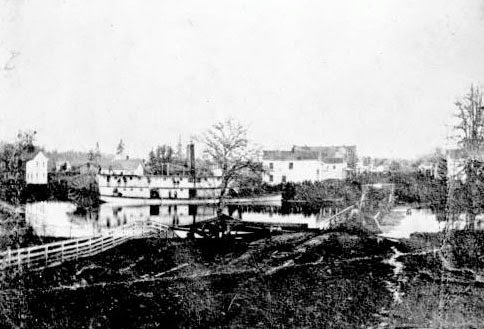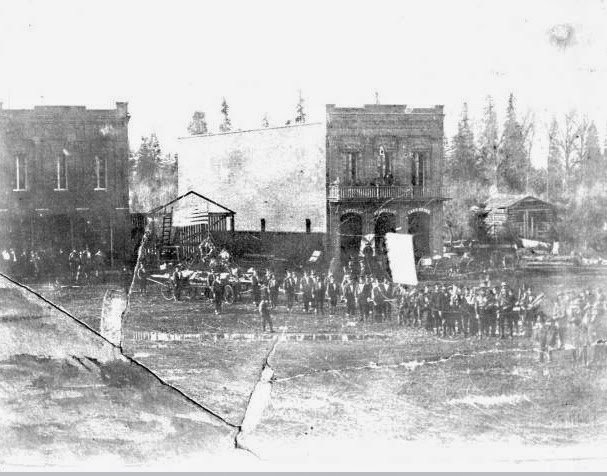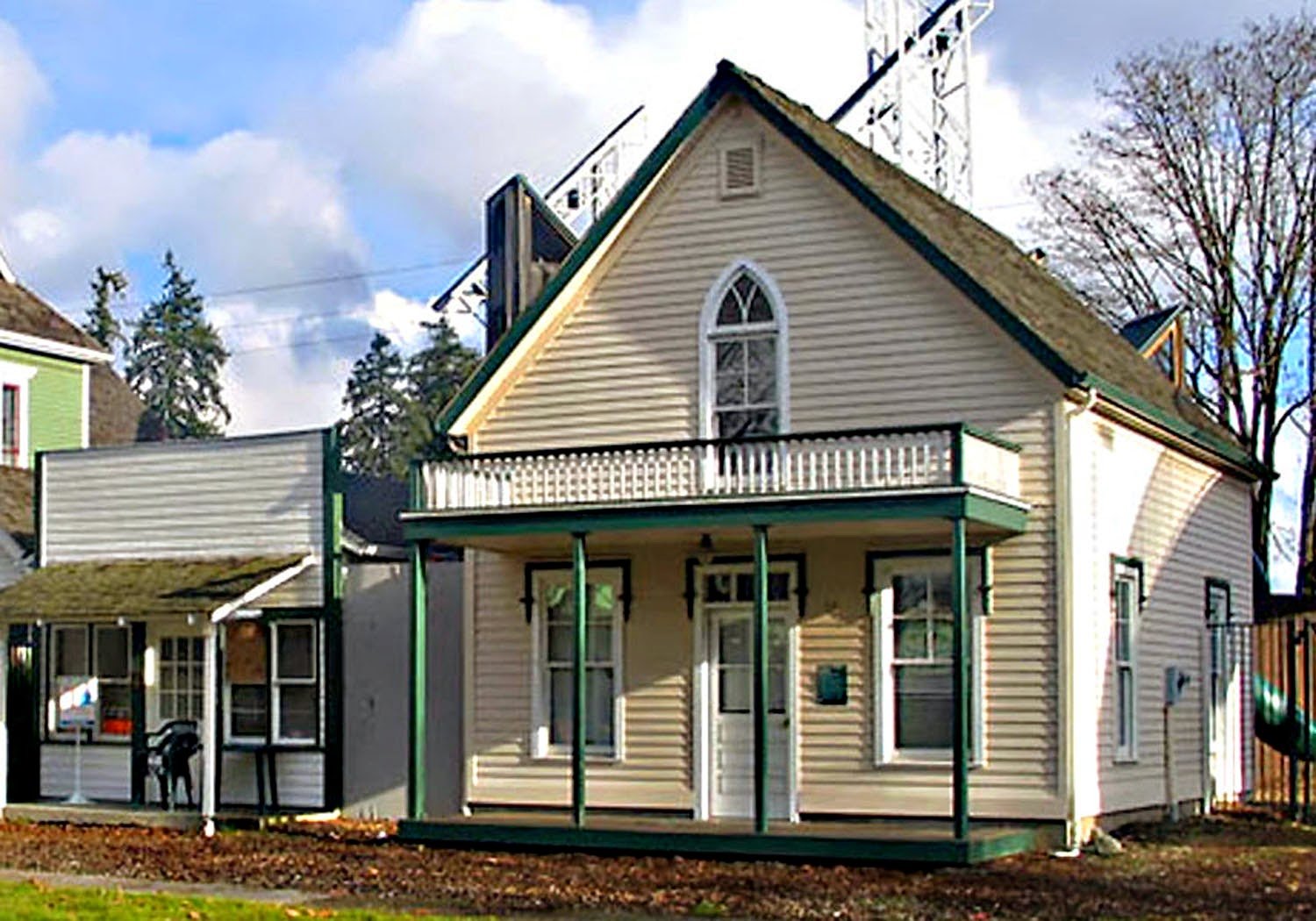World Events
- Benito Juarez is elected President of Mexico, although soon faced with the French invasion. An initial Mexican victory (in 1862) is commemorated with the annual Cinco de Mayo celebration.
- Alexander II of Russia (The Liberator) frees the serfs and sponsors other important government reforms. (He sells Alaska to the U.S. in 1867.)
- Queen Victoria’s husband, Prince Albert, dies. She wears black for the rest of her life in grief, rarely appears in public or goes to London, preferring Windsor Castle.
- The southern states form the Confederac
y with capital at Richmond, Virginia. - Fort Sumpter is fired on and Civil War battles begin across the U.S.
- Confederate flag adopted, the “Stars and Bars”.
- President Lincoln offers Union command to Col. Robert E. Lee, but he declines to serve with his state of Virginia: after several other unsuccessful Union generals, U. S. Grant is appointed commander of Union troops in 1864.
- A telegraph is sent between St. Louis and San Francisco.
- West Virginia and Kansas become states.
- In England, Dickens publishes Great Expectations and George Eliot, Silas Marner. In Boston, Julia Ward Howe writes lyrics for popular tune, “John Brown’s Body”, creating “The Battle Hymn of the Republic”.
In Salem
 |
| The sternwheeler “Onward” on Pringle Creek at Commercial Street Bridge |
This year Salem citizens had a problem more immediate than the developing war between the northern and southern states: one of the most hazardous floods in our history engulfed the city and the surrounding area of farms and villages. The Pringle Creek photograph above shows the sternwheel
Another victim of the flood was Salem’s original 1846 ferry service across the Willamette River at Ferry Street. Operated by Rhoda White, widow of “Capt.” White, (later the survivor of two subsequent divorces) the ferry sank and its load of wheat drifted away in the floodwaters.
This was the same flood that drowned the town of Champoeg, the site where, in 1843, 100 male settlers had voted (51-49) to form an Oregon provisional government under the jurisdiction of the United States. A memorial was constructed in 1942. Many pioneer Salem names are found there.
When you visit
From the east side of Commercial
Other Events in Salem
- Edwin Cooke (1810-?) was named as our second mayor. He was Oregon State Treasurer (1862-70), a leading businessman and steamboat owner. His first Salem home was probably on Division Street, near the homes of other prominent citizens. No trace of this home remains, but correspondence of the time tells us the home was noted for it beautiful garden. By 1872, he had built a Victorian mansion on Court Street, across from the State House. (See 1872 for the story of the next three generations of the family, including Edwin Cooke’s granddaughter Luella who lived to be 109 year old.)
- Salem resident Col. Edward Dickinson Baker, a close friend of President Lincoln and one of Oregon’s first two Senators, is killed in the Battle of Ball’s Bluff while leading a Union Army regiment, becoming the only sitting senator to be killed in the Civil War. Lincoln’s second son Eddy, who died at four year old in 1950, had been named for Edward Baker. When the news of his death reached the Washington, D.C., James W. Nesmith of Oregon, an Independent who was the other original Oregon senator presented a resolution, passed by the Senate, declaring that the members would go into mourning wearing black crepe on their arms for thirty days. The town of Baker, Oregon and the county, were named for the senator in 1862. Only one year before his election, Edward Baker, an Illinois native, had come to Oregon from his law practice in San Francisco. His family was with him during his brief residency here in Salem, but the location of his home is not known. One theory suggests the Bakers lived on the Willamette University campus. A house, probably of that period in time, was moved north from the oldest, central section of the city and the owners have been given information that it was his home. More research may determine whether his Salem residence survived.
 |
| Alert Hook and Ladder Fire Company |
- The volunteer fire fighters of the Alert Hook and Ladder Fire Company, located at 58 State Street, assemble on Commercial Street for a photograph. This classic picture is probably the only one we have of this early year of Salem’s history. The fire fighters are lined up in front of a two story Commercial Street building in the center of the photograph where McCully, Starkey and Company had a “cash store”. A log cabin is seen to the right.
- This spring, a one-room school was constructed along Military Road (Doaks Ferry Road) and named Brush College in “a spirit of fun and derision” because it was the center of learning for all ages of students and was located where brush had been traditionally burned-over by Native Americans. The school has been enlarged, but retains the original structure. On May 6, 2011 the school celebrated its 150th anniversary with an exhibit including historical stories and photographs.

Wilson-Durbin House
- On Water Street, Joseph Gardiner Wilson builds a house soon purchased by Isaac and Olive Durbin. The Durbin family, who operated the Livery Barn in downtown Salem, occupied the home for over 50 years when Water and Front streets were desirable residential locations in the small city. By 1988, the house had fallen into disrepair, but renovation was under consideration by contractor Gregg Olson and a committee supported by the mayor. However, in 1990 before this could be accomplished, a fire of unknown origin destroyed the house. It was reconstructed, with a different upstairs window and porch, in its original location. It is now part of our Gilbert House Children’s Museum where it is used for classes and special events.
